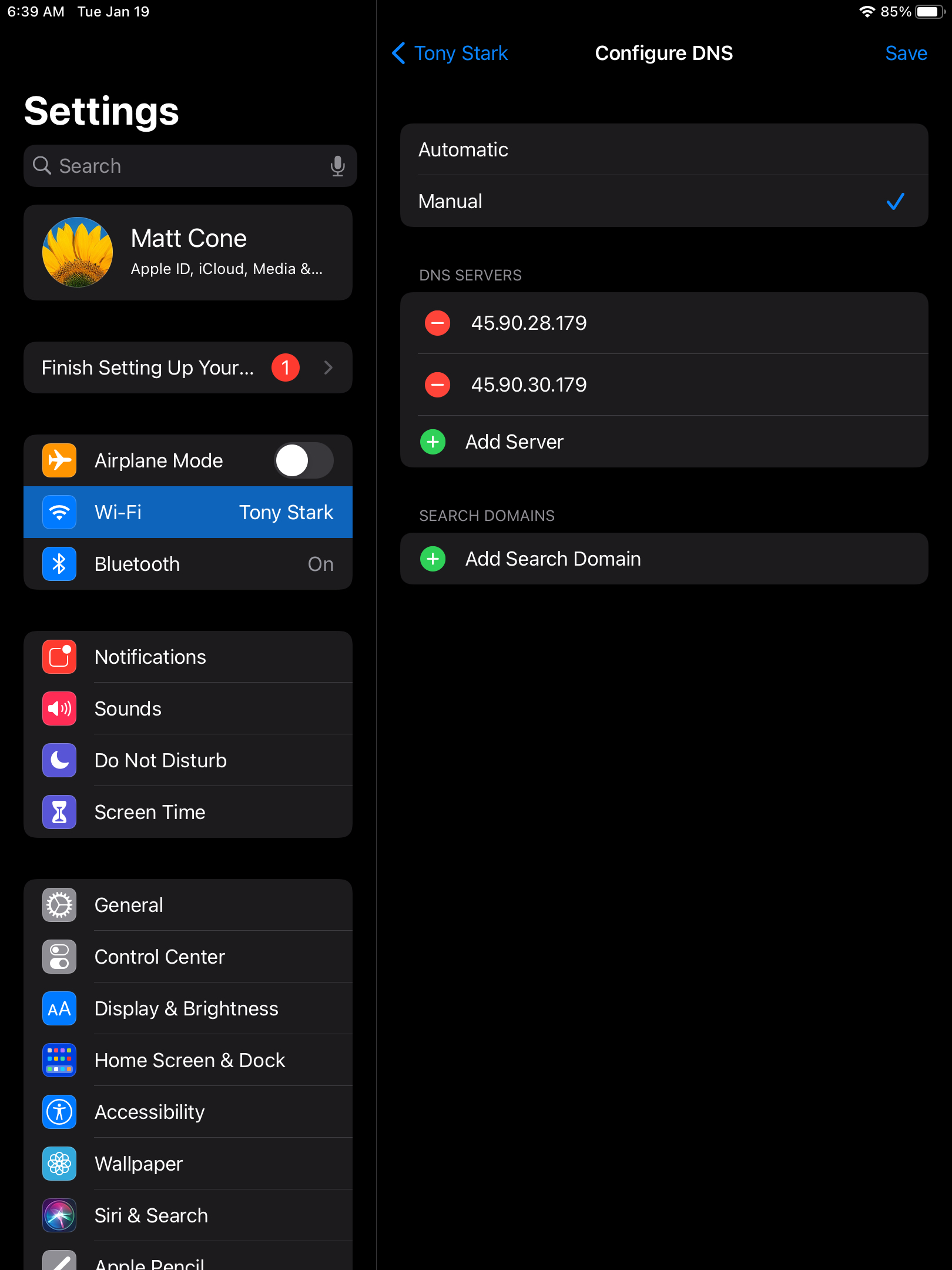

You do this by setting up a portforwarding.Įvery packet which is addressed to your public IP Address and a specified port will be sent to the specified local IP Address. Mac Users: Navigate to Network Preferences > Advanced > DNS to see the configured DNS server provided by DHCP. And therefore you need to tell your NAT exactly that. SMB requires to have packets forwarded from your NAT to your machine, but your NAT (Router) doesn't know that you want to receive those requests. What has that to do with your problemīut as you probably have noticed: This has noting to do with SMB. The client (your machine) knows your ip and updates the entry for you.
#Use google dns servers mac update#
After each change you have to update your dns entry.ĭynDNS solves this problem by offering a service which a client can connect to. In a worst case scenario multiple times a day (very uncommon). This makes it easier for the end-consumer to reach a certain server, because he only has to remember a certain name or even brand and not an ip address which consits of numbers or even worse hexadecimal characters.īut there is one problem associated with DNS. What is DNS/DynDNSĭNS is a system where Domain names eg. NextDNS initially could not resolve the SAD DNS page. Cloudflare, Google and Quad9 were all vulnerable. DNS settings are specified in the TCP/IP Properties window for. On macOS, do Applications -> Utilities -> Terminal. Configure your network settings to use the IP addresses 8.8.8.8 and 8.8.4.4 as your DNS servers. The problem is that even though if your router supports DynDNS it won't know where to send the packages to. On both Linux and macOS, you can also use the dig command to see which DNS server is being used. So you defnitely need a port forwarding to achieve this. For questions about this and also if you need help, we are available on Telegram.All the credit to mashuptwice and Spiff Short form Our DNS test results differ considerably from other tests that can be found on the internet. Our work leads to additional privacy considerations for institutions that operate their resolvers and for operators of authoritative servers that log and share DNS data. We demonstrate this claim by applying our methodology to real traffic from DNS servers that use partial prefix-preserving anonymisation. We also aim to show that current practices of prefix-preserving anonymisation of IP addresses and aggregation above recursion are insufficient to protect the privacy of institutions, pointing to the need for new approaches. We define a method for identifying queries of institutions and detecting leaks.

Many experts like us identify this risk by looking at leaks in email traffic that reveal communication patterns, and leaks in access to sensitive websites, both of which can damage an institution’s public image. We document institutional privacy (protection from surveillance by ISPs or global data services) as a new risk posed by DNS data collected on authoritative servers, even after caching and aggregation by DNS recursive. Recursive store and aggregate traffic for many users, factors that are generally assumed to protect end-user privacy over recursive. Previous analyses of DNS privacy have focused on privacy risks to individual end-users, particularly traffic between users and recursive.

In DNS, users ask recursive resolvers (or “recursive”) to make requests on their behalf. The domain name system (DNS) is used for every website visit and email transmission, so privacy is an obvious concern.


 0 kommentar(er)
0 kommentar(er)
